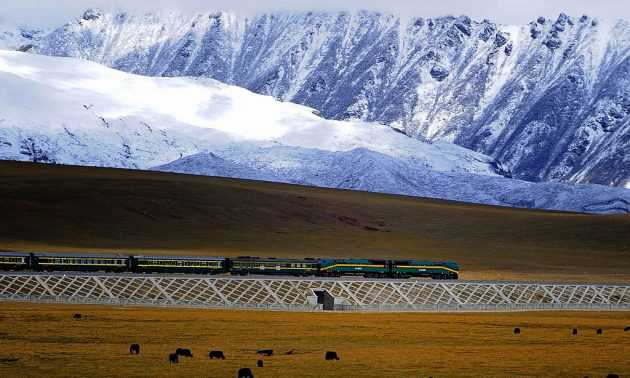Full speed ahead for rail services to the Roof of the World
14 August, 2018

Tibet is likely to be a big winner in China’s latest infrastructure spending spree, as the government tries to boost connectivity in a remote region whose population has shrunk to only three million.
Beijing has been expediting preparatory work on two additional rail lines that will link the Tibetan capital, Lhasa, with key cities in neighbouring provinces: Kunming in Yunnan and Ürümqi in the Xinjiang Uyghur Autonomous Region.
Engineers will face a trainload of challenges, ranging from permafrost and sand storms to alpine forests, but they can draw on their experience from building the impressive 2,000-kilometer Qinghai–Tibet railway, opened in 2006.
Due to its elevation and difficult terrain, Tibet was the last provincial-level region to gain a rail system. The air is so thin that passenger trains are equipped with oxygen vents, and are usually limited to traveling at 100 kilometers an hour through the province.
There are already direct services from Beijing, Chengdu, Guangzhou, Shanghai and elsewhere to Lhasa via Qinghai. The Qinghai-Tibet line includes the Tanggula Pass, the world’s highest point on a railway at 5,072 meters above sea level.
Xinhua said work is also underway on several sections of the new line between Lhasa and Chengdu, officially known as the Sichuan-Tibet railway. A fully-electrified, heavy rail link, it will have to cut through the swamps, rugged gorges and mountains that lie between the two cities, with an elevation difference of more than 3,000 meters.
The line will run for 1,629 kilometers and is expected to cost a whopping 105 billion yuan (US$15.2 billion). Construction started from both ends in 2014 and trains will be streaking from the Sichuan Basin to the Roof of the World at 160km/h by 2025.
China’s vision of a railway network on the Tibetan plateau is intended to close the gap between Tibet and other parts of the country. The railways will haul coal, oil and gas, as well as business and job opportunities, into a region that is still an economic backwater.
